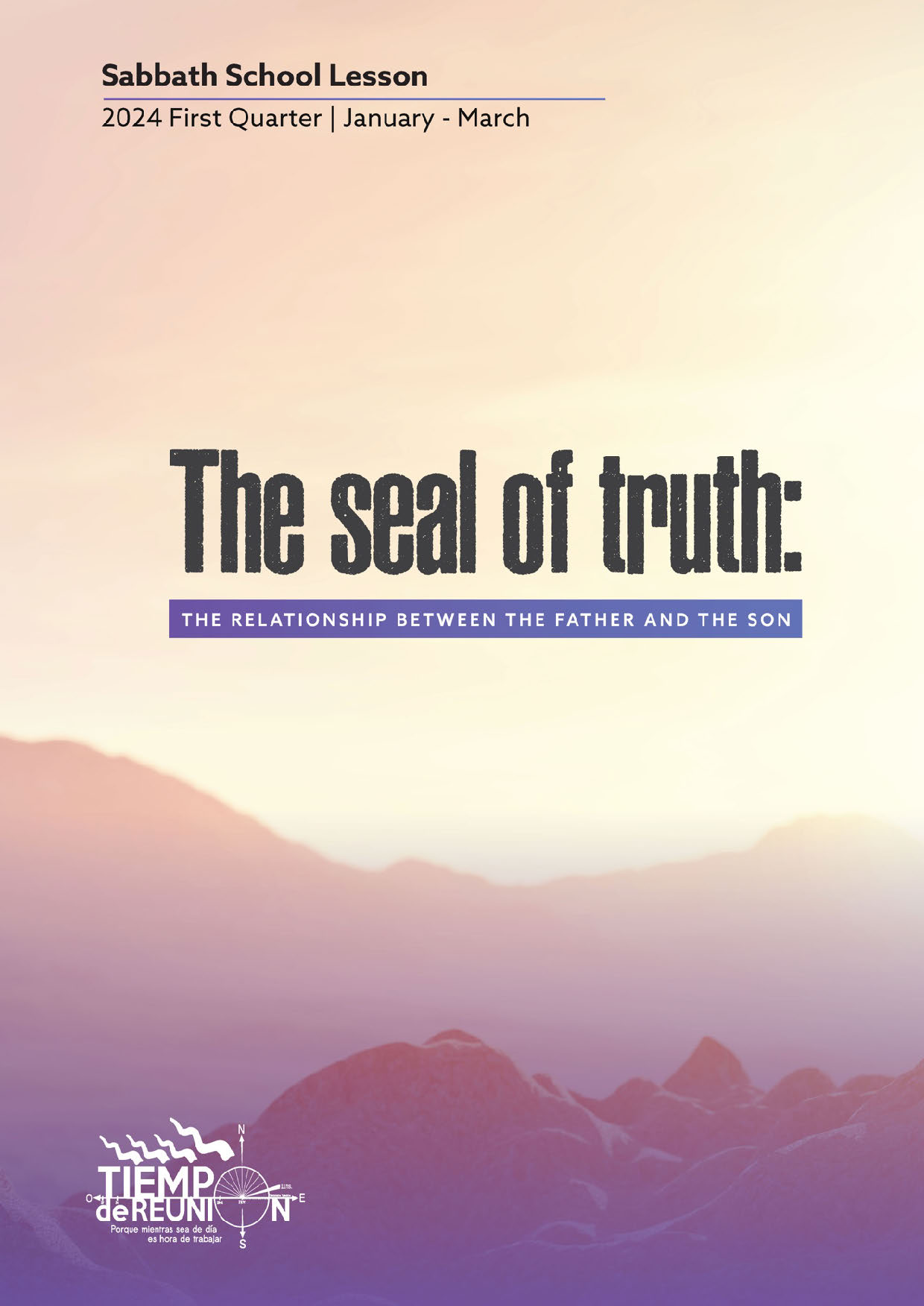A Solid Platform
From the beginning of time Satan has tried to confuse the human race about the meaning of God’s statements. Satan’s first statement to Eve was not a direct attack on what God had said but rather an insertion of doubt as to what God really meant. “Yea, hath God said, Ye shall not eat of every tree of the garden?” The implication and manner of question assumes a completely different framework of understanding. Satan’s question suggests that there must be some kind of mistake here.[1] Satan does not seek to establish any reason why he thinks there is a mistake in what Eve thinks God has said, he just assumes it is a mistake based on his own frame of reference. That frame of reference of course is that everyone has an independent life source as we outlined in the first few chapters. This assumption is never stated but is simply assumed.
God’s word was plain enough:
Gen 2:17 But of the tree of the knowledge of good and evil, thou shalt not eat of it: for in the day that thou eatest thereof thou shalt surely die.
The plain and literal meaning, accepted and embraced by Adam and Eve would have prevented the untold misery that the human race now suffers.
What is the point of this illustration? A key element of Satan’s attack on truth is to infer doubt concerning the literalness of God’s plain statements. Once the doubt is sustained, then the direct attack takes place. This is what Satan did when he boldly stated “You shall not surely die” – This was the direct attack after the initial insertion of doubt.
The fact that Eve had to restate what God had said suggests that she needed to reassure herself. She could have simply said “YES!” and offered no explanation. The justification offered suggests that the seed of doubt was already growing in her mind. Empirical and scientific evidence further embellished this doubt. The fact that the serpent was eating the fruit, was still alive, and could talk added weight to the serpent’s underlying suggestion that there must be some mistake either about her understanding of what God said or that God was simply wrong.
Paul warns us regarding this:
Col 2:8 Beware lest any man spoil you through philosophy and vain deceit, after the tradition of men, after the rudiments of the world, and not after Christ.
The rudiments or first principles of the world stem from the first lie – you shall not surely die. It suggests inherent life and power are possessed by mankind and consequently that the display of such power reveals the value of the man. These principles are constantly at war with the plain statements of Scripture which continually remind us that God created us and we are responsible to him every moment of every day.
Development of Every Key Adventist Doctrine was Literal and Real
If you survey the various denominations with reference to the key pillars of the Christian faith, you will find that none of them hold a consistently plain and literal view. This is where Seventh-day Adventism has differed.[2] From beginning to end Adventism has held a plain reading of Scripture. Notice the following chart:
|
Doctrine |
SDA Belief |
|
Father and Son |
Literal and Personal Beings |
|
Heaven |
Heaven is a literal place |
|
Creation |
The earth was created in six literal days |
|
The Devil |
A literal Devil called Satan that tempts us |
|
Nature of Man |
Mortal, Death is literal – return to the dust. Wages of sin is death not eternal life in hell. |
|
Age of the Earth |
A literal 6000 years according to the literal genealogy of the Old Testament |
|
The Flood |
The flood literally covered the entire earth after 40 days of rain |
|
Old Testament Stories |
All considered true |
|
The Commandments |
To be literally followed |
|
The Sabbath |
A literal weekly rest and is a memorial of a literal six day creation |
|
The Daily, Host and Stars Persecuted. Sanctuary Cast Down |
Literal events of Rome persecuting God’s people (host) their leaders (the stars)[3] Magnification against the Prince – the Crucifixion. Casting down of the Sanctuary – the literal place of Rome taken over by the Papacy |
|
Virgin Birth |
Literal |
|
Nature of Christ |
Christ literally took our nature, not the nature of Adam before the fall.[4] |
|
Miracles of Jesus |
All literally took place |
|
Death of Christ |
Literally took place – The whole person of Jesus died. |
|
Resurrection |
Literal and real. The central hope of Christianity |
|
Heavenly Sanctuary |
Literal and real. Administered by the real priest Jesus |
|
Elder |
Literal male husband of literal female wife |
|
Christian Perfection |
Literal and real through the faith of Christ |
|
Investigative Judgment |
Literal and real. Daniel Seven’s books being opened are literal and real. The Ancient of days and Son of man are real and literal persons and all are literal antitypical fulfilments of the Most Holy Place ministry of the literal heavenly Sanctuary |
|
Second Coming |
A literal, audible and real event |
No other denomination holds a consistent and literal view of these Bible doctrines. Many churches are simply not able to hold these doctrines because of a spiritualizing of other doctrines. For instance, most churches believe in the immortality of the soul and that the righteous go straight to heaven. Such a belief makes null and void the concept of an investigative judgement. For some it also negates the need for a literal second coming. For others a belief in evolution renders useless a belief in the Sabbath, it simply has no meaning. Also a spiritualizing of the nature of Christ renders meaningless the concept of a real Christian perfection. If Christ did not literally take our nature then we can not literally have victory over sin. The cause and effect is simple if not obvious to the discerning Bible student.
Pioneers Hammered out a Literal View of Salvation Surrounded by and Attacked by Spiritualized Views
The Adventist Pioneers had to pick their way through many spiritualized views to build their platform. The Advent doctrine was built upon a clear system of interpretation that allowed the Bible to explain itself clearly and simply. William Miller wrote out a 14 point list called rules of interpretation. Let us notice some of these rules.
- Every word must have its proper bearing on the subject presented in the Bible. Matt 5:18
- To understand doctrine, bring all the scriptures together on the subject you wish to know; then let every word have its proper influence, and if you can form your theory without a contradiction, you cannot be in an error. Isa.28:7-29, 35:8. Prov.29:27. Luke 24:27,44,45. Rom.16:26. James 5:19. 2Pet.1:19,20.
- Scripture must be its own expositor, since it is a rule of itself. If I depend on a teacher to expound it to me, and he should guess at its meaning, or desire to have it so on account of his sectarian creed, or to be thought wise, then his guessing, desire, creed or wisdom is my rule, not the Bible. Ps.19:7-11, 119:97-105. Matt.23:8-10. 1Cor.2.12-16. Eze.34:18,19. Luke 11:52. Mal.2:7,8.
- God has revealed things to come, by visions, in figures and parables, and in this way the same things are oftentime revealed again and again, by different visions, or in different figures, and parables. If you wish to understand them, you must combine them all in one. Ps.89:19. Hos.12:10. Hab.2:2. Acts 2:17. 1Cor.10:6. Heb.9:9,24. Ps.78:2. Matt.13:13,34. Gen.41:1-32. Dan.2. 7. and 8. Acts 10:9-16.
- How to know when a word is used figuratively. If it makes good sense as it stands, and does no violence to the simple laws of nature, then it must be understood literally, if not, figuratively. Rev 12:1,2. 17:3-7
- To learn the true meaning of figures, trace your figurative word through your Bible, and where you find it explained, put it on your figure, and if it makes good sense you need look no further, if not, look again.
Giving a summary of his thoughts William Miller stated:
I believe the Bible is the revealed will of God to man, and all therein is necessary to be understood by Christians in the several ages and circumstances to which they may refer; - for instance, what may be understood to-day might not have been necessary to have been understood 1000 years ago. For its object is to reveal things new and old, that the man of God may be thoroughly furnished for, and perfected in, every good word and work, for the age in which he lives. I believe it is revealed in the best possible manner for all people in every age and under every circumstance to understand, and that it is to be understood as literal as it can be and make good sense; - and that in every case where the language is figurative, we must let the Bible explain its own figures. We are in no case allowed to speculate on the Scriptures, and suppose things which are not clearly expressed, nor reject things which are plainly taught.[6]
These rules were and are the benchmark of the Advent movement. In summary
- Every Scripture passage must have its weight on a subject and then those passages must be harmonised.
- Passages are to be understood literally unless there is good reason to see them figuratively.
- The meaning of figures are found else where in the Bible.
Here is Ellen’s Testimony concerning these rules of interpretation. NOTE IT WELL.
Those who are engaged in proclaiming the third angel's message are searching the Scriptures upon the same plan that Father Miller adopted. In the little book entitled "Views of the Prophecies and Prophetic Chronology," Father Miller gives the following simple but intelligent and important rules for Bible study and interpretation:--
"1. Every word must have its proper bearing on the subject presented in the Bible; 2. All Scripture is necessary, and may be understood by diligent application and study; 3. Nothing revealed in Scripture can or will be hid from those who ask in faith, not wavering; 4. To understand doctrine, bring all the scriptures together on the subject you wish to know, then let every word have its proper influence; and if you can form your theory without a contradiction, you cannot be in error; 5. Scripture must be its own expositor, since it is a rule of itself. If I depend on a teacher to expound to me, and he should guess at its meaning, or desire to have it so on account of his sectarian creed, or to be thought wise, then his guessing, desire, creed, or wisdom is my rule, and not the Bible."
The above is a portion of these rules; and in our study of the Bible we shall all do well to heed the principles set forth.[7]
Uriah Smith expressed it this way:
All Scripture language is to be taken literally, unless there exists some good reason for supposing it to be figurative; and all that is figurative is to be interpreted by that which is literal.[8]
J.N Loughborough makes this perceptive comment:
The beauty of Divine Revelation has been shut away from the minds of the common people, by their being taught, and supposing that the Bible does not mean what it says, or that the sense of the scripture writers is not contained in the scriptures themselves, but that they are mystical and have a hidden meaning. If this be a fact, we inquire, How shall we arrive at just conceptions of that word and its true interpretation? Oh, says one of the proud professors of our day, you go to Rev. Mr. A., Doctor of Divinity, he will enlighten your mind in regard to the matter. The second says, A. will not inform you aright; you must go to one of our Divines, and so all direct our attention to a different direction for an understanding of the word. They disagree among themselves, and thus are produced upward of 600 different sentiments of the present time. This grows out of the principle that the Bible does not mean what it says, but means something which is not conveyed to our minds by the literal reading of the text. If the position be true that the student of the Bible must first have a thorough knowledge of the popular theology of the age, before he can understand that book, then it would seem to the inquiring mind that the Bible, after all, was not the revelation of God's will, as it does not convey the idea of the author, but his meaning is to be found by the learning of the schools.
If the Bible is the revelation of God's will to man, then his will is found in the book, and the book means what it says. We admit that figures are there used, and explained, but claim that a plain statement should be understood the same as when made in any other book. We can form no just conceptions of God's character as revealed in the word, if this be not the truth of the matter. If God had revealed his will in such a manner that man cannot understand it, and then pronounced in that word condemnation and death to those who did not obey his will, we should at once conclude that he manifested none of the character the word represents him as possessing.
If the Bible is not a literal book, then we need another book, proceeding from the author of the Bible, explaining the revelation we now have, that we may have the will of God.[9]
George Storrs pin points the efforts of Satan to destroy the church by bringing in mystical meanings to the Bible text:
It sustains the mischievous practice of mystifying, or making the Scriptures to have a secret or hidden meaning, in the plainest texts.
This mischievous practice was brought into the church, almost as soon as the Apostles had left the world. The converts from heathenism seemed intent on uniting heathen philosophy with christianity. Hence they must find an abundance of mysteries in the Scriptures: and the practice of allegorizing, i.e. making the language to contain something that does not appear in the words, commenced and generally prevailed, before the third century. This was done, doubtless, with a view to lead heathen philosophers to embrace christianity, as affording them a fruitful field for their researches. But it led the church astray into the wild fields of conjecture; and every lively imagination could find hidden wonders in the Bible; while the plain literal meaning of the text was disregarded. That fatal practice increased from age to age, till the simplicity of the gospel was totally eclipsed, and the obscuration has not wholly disappeared to this day.[10]
It is exactly this plan Satan has brought to bear upon the Adventist church. The fight that our pioneers had against spiritualism coming to our ranks was relentless. But our pioneers resisted it.
Notice Ellen Whites comments:
As we were about to journey to New Bedford, a special message came from Sister M. for me to come and relate what the Lord had shown me. Brother Nichols took my sister and myself to the house where quite a number were collected. There were individuals present whom I had been shown were strong fanatics. They dealt in a human or Satanic influence, and called it the spirit of God. I had not seen them before with my natural eyes, yet their countenances were familiar; for their errors and corrupting influence had been shown me, and I felt forbidden to relate my vision in such a company. There were some present that we loved; but they had been led away in this deception. The leading ones considered this a favorable opportunity to exert their influence over me, and cause me to yield to their views.
“I knew their only object was to mangle the visions, spiritualize away their literal meaning, throw a Satanic influence upon me, and call it the power of God. {LS88 229.2}
Spurious scientific theories are coming in as a thief in the night, stealing away the landmarks and undermining the pillars of our faith. God has shown me that the medical students are not to be educated in such theories, because God will not endorse these theories. The most specious temptations of the enemy are coming in, and they are coming in on the highest, most elevated plane. These spiritualize the doctrines of present truth until there is no distinction between the substance and the shadow. MM 87.4
Ellen White warns us in Acts of the Apostles
The follower of Christ will meet with the "enticing words" against which the apostle warned the Colossian believers. He will meet with spiritualistic interpretations of the Scriptures, but he is not to accept them. His voice is to be heard in clear affirmation of the eternal truths of the Scriptures. Keeping his eyes fixed on Christ, he is to move steadily forward in the path marked out, discarding all ideas that are not in harmony with His teaching. The truth of God is to be the subject for his contemplation and meditation. He is to regard the Bible as the voice of God speaking directly to him. Thus he will find the wisdom which is divine. AA 474, 475
The Adventist platform of truth stands upon a plain reading of Scripture from beginning to end. To loosen one plank of a literal view on these doctrines is to open a flood gate of spiritualised views. Again we have been warned:
I was again brought down through these messages, and saw how dearly the people of God had purchased their experience. It had been obtained through much suffering and severe conflict. God had led them along step by step, until He had placed them upon a solid, immovable platform. I saw individuals approach the platform and examine the foundation. Some with rejoicing immediately stepped upon it. Others commenced to find fault with the foundation. They wished improvements made, and then the platform would be more perfect, and the people much happier. Some stepped off the platform to examine it and declared it to be laid wrong. EW 259
The key thrust of Satan’s attack against God’s people after 1844 was trying to introduce spiritualized views. The rejection of the 1888 message by the church which left the church more vulnerable to satanic attack, combined with a dying off of some of the older pioneers opened a door to these theories coming in. Kellogg was the first obvious case. In dealing with the Kellogg crisis Ellen White makes the critical point that the errors of Kellogg were the same as that she met after 1844.
After the passing of the time, [1844] we were opposed and cruelly falsified. Erroneous theories were pressed in upon us by men and women who had gone into fanaticism. I was directed to go to the places where these people were advocating these erroneous theories, and as I went, the power of the Spirit was wonderfully displayed in rebuking the errors that were creeping in. Satan himself, in the person of a man, was working to make of no effect my testimony regarding the position that we now know to be substantiated by Scripture. Just such theories as you have presented in Living Temple were presented then. These subtle, deceiving sophistries have again and again sought to find place among us. But I have ever had the same testimony to bear which I now bear regarding the personality of God. . . . 4MR 57
The defense of Adventists against these spiritualized views was a view that the Father and Son were literal persons. The literal views of the pioneers were NOT simply unfortunate imported ideas from the Christian Connexion as is claimed,[11] they were the cornerstone of guarding against spiritualized views.
The Inroads of Spiritualism from Maranatha Media on Vimeo.
The word spiritualism involves both communication with evil spirits and adopting the methods they use in twisting Scripture.
The Adventist Message has been built firming upon the literal rule of interpretation. All our doctrines were developed by taking all texts together and harmonising their meaning in plain language, letting the Bible alone define terms and symbolism when a literal meaning is impossible.
The most obvious place where a literal rule applies is in the terms Father and Son. If Jesus is not truly the Son of the Father, then this sets a platform to spiritualise away all our teachings.
The Sanctuary, victory over sin, the nature of Christ, roles of men and women are all spiritualised away. This train of heresies finds it source in spiritualising the Father and Son so that these terms have no relational meaning.
[1] JFB Bible Commentary on Gen 3:1 (E-sword edition)
[2] Samuel Koranteng-Pipim, Receiving The Word (Berean Books, Berrien Springs, Michigan 1996) Page 32.
[3] Uriah Smith, Daniel and Revelation (Review and Herald, 1944) Page 159; William Miller, Views of Prophecy Page 28. J.N Andrews, The Sanctuary and the 2300 Days, Page 34. James White, Bible Adventism, Page 127
[4] The view of the nature of Christ has altered widely in Adventism. The view that Christ took a pre-fall nature demands a spiritualized view of texts in Hebrews and Romans. Heb 2:16 states that Christ took on Him the seed of Abraham, not the seed of Adam before the fall. Rom 1:3 states that He was made of the seed of David according to the flesh. The statements are simple and unambiguous. Taking a pre-fall view of the nature of Christ forces these passages to be figurative in some sense.
[6] Miller’s Works Volume 1 Page 33.
[7] RH, November 25, 1884
[8] Uriah Smith. Thoughts on Daniel and Revelation (Review and Herald, 1897) Page 123
[9] J.N Loughborough. Man’s Present Condition and His Future Reward or Punishment (Advent Review Office, 1855) Page 7.
[10] George Storrs, On the Enquiry Is there Immortality in Sin and Suffering. Page 131
[11] George Knight. A Search For Identity (Review and Herald, 2000) page 32.





